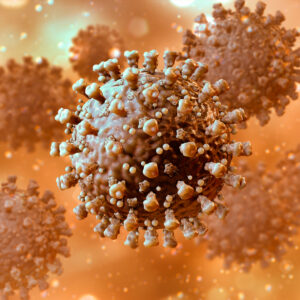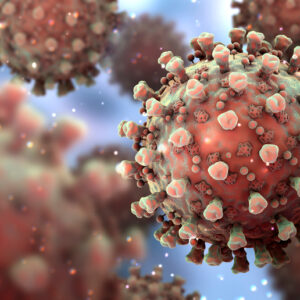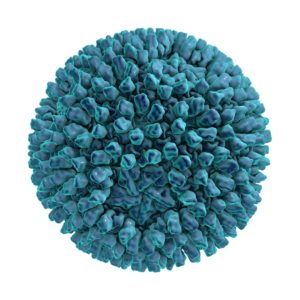African Swine Fever Virus
African swine fever (ASF) is a severe viral disease affecting domestic and wild pigs and is responsible for serious production and economic losses. The disease can be spread in several different ways, including live or dead pigs, domestic or wild, and pork products. Due to its high environmental resistance African swine Fever virus (ASFV) can also be spread via contaminated feed and objects such as shoes, clothes, vehicles, knives, equipment. Outbreaks have been reported in Africa and parts of Europe, South America, and the Caribbean. More recently (since 2007) the disease has been reported in multiple countries across Africa, Asia and Europe, in both domestic and wild pigs. There is currently no approved vaccine against ASF.
African Swine Fever Virus Background
African swine fever virus (ASFV) is a DNA virus in the Asfarviridae Family; genus Asfivirus and is the sole member of its Family. ASFV is a large, icosahedral, double-stranded DNA virus with a linear genome of 189 kilobases containing more than 180 genes. It replicates in the cytoplasm of infected cells and is the only known virus with a double-stranded DNA genome to be transmitted by arthropods. ASFV causes a haemorrhagic fever with high mortality rates in pigs. ASF occurs through transmission cycles involving domestic pigs and wild boars (in regions of Asia, Europe and Africa), wild African suids (warthogs, bush pigs, giant forest hogs), and soft ticks (genus Ornithodoros) which act as a reservoir and vector (OIE, 2018). In these wild hosts, infection is generally asymptomatic. ASFV does not cause disease in humans.
In domestic pigs the early signs of ASF are non-specific and include high fever, lethargy and loss of appetite. Pigs may die suddenly without further disease signs. At later stages further signs may be observed including reddening of the skin, diarrhoea, vomiting, laboured breathing, swollen red eyes, eye discharge, abortions, still-births, increasing morbidity and unwillingness to get up. In severe cases death can sometimes be the only sign of infection, with a case fatality rate as high as 100% (The Pirbright Institute).
The first outbreak of ASF was reported in Kenya in 1907, coinciding with a massive increase in domestic pig farming. The disease remained restricted to Africa until 1957, when it was reported in Lisbon, Portugal. In 1971 an outbreak of the disease occurred in Cuba, resulting in the slaughter of 500,000 pigs. In September 2018, an outbreak occurred in wild boars in Southern Belgium resulting in the slaughter of 4,000 domestic pigs and ASF has since been reported in a number of Eastern and Northern European countries. In August 2018, China reported the first African swine fever case in East Asia and by 2019 the Chinese pig population was reported to have reduced by almost 40 million compared with the previous year. ASF has also since been reported in the Philippines, Vietnam and South Korea (Netherton et al., 2019).
The clinical symptoms of ASFV infection are very similar to classical swine fever, and the two diseases usually have to be distinguished by ELISA or isolation of the virus from either the blood, lymph nodes, spleen, or serum of an infected pig. Researchers are currently developing different types of ASF vaccines (a live attenuated vaccine and a subunit vaccine) as well as ASF antivirals that could lower virus replication in pigs (The Pirbright Institute). However, the widespread culling of animals is still one of the most effective methods of containing and eliminating the disease (Dixon et al., 2019).
References
- African Swine Fever Virus factsheet. The Pirbright Institute.
- Dixon et al. (2019). African swine fever. Antiviral Res. 165:34-41.
- Netherton et al. (2019) The Genetics of Life and Death: Virus-Host Interactions Underpinning Resistance to African Swine Fever, a Viral Hemorrhagic Disease. Front. Genet. 10:402.
- The World Organisation for Animal Health (OIE). African Swine Fever. Oct 2018.
African Swine Fever Virus Antigens
The Native Antigen Company is pleased to provide two recombinant ASFV proteins, pp62 and p30 for use in immunoassay and diagnostics research.
Questions?
Check out our FAQ section for answers to the most frequently asked questions about our website and company.



